Neurofeedback Therapy Explained: What Is Neurofeedback & How Brain Training Works
Discover how neurofeedback therapy and brain mapping optimize brain function. Learn what neurofeedback is, how EEG neurofeedback works, and if it...
Does neurofeedback work? Is it a placebo effect? Learn the difference between non-linear and linear neurofeedback and the signs when it's working and what to expect.
Before jumping into the important topic of assessing if neurofeedback works or is a sham, first a look at the different types of neurofeedback; not all devices are created equal. There are two generations of neurofeedback: linear or protocol, which is the first generation, and non-linear or Dynamical neurofeedback, which is the latest generation. With these two designs how results are assessed and the benefits received can vary enough that it's important to put them in two separate categories.
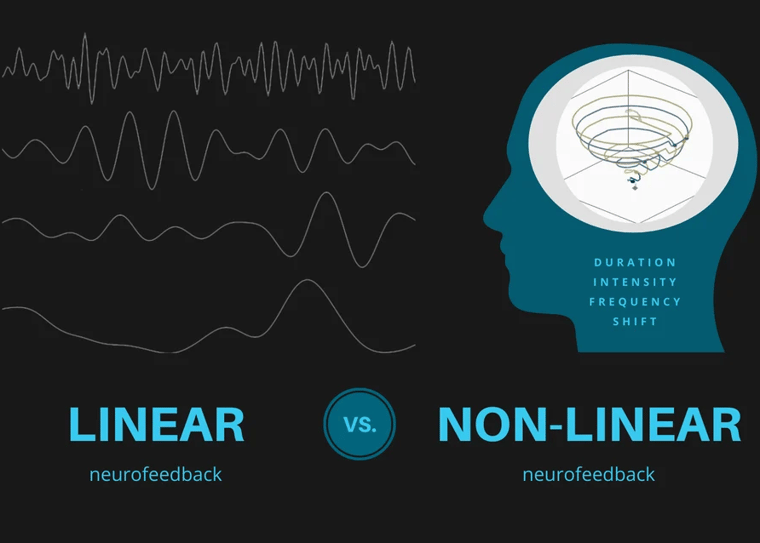
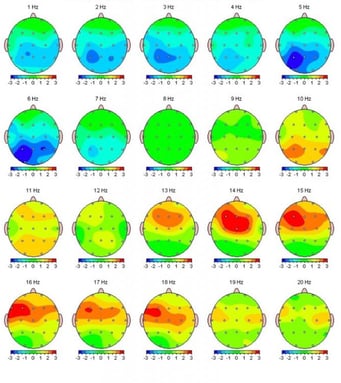 With the first generation of neurofeedback devices a brain map or QEEG is done initially to assess areas of the brain that are functioning sub-optimally for the client. To provide a simplistic overview of what is being assessed with protocol neurofeedback, different aspects of brain functioning are associated with different electrical currents the brain produces and the mapping records which brainwaves are active or not. As example, when we are sleeping we produce a brainwave frequency called "Theta." A neurofeedback clinician would not want to see high Theta brainwaves when that person is in the wakeful, action part of the day. Conversely, the trainer would not want to see the action-oriented brainwaves late at night. Once this map has been taken, the clinician uses it to set protocols for the neurofeedback device to increase and/or decrease brainwave frequencies.
With the first generation of neurofeedback devices a brain map or QEEG is done initially to assess areas of the brain that are functioning sub-optimally for the client. To provide a simplistic overview of what is being assessed with protocol neurofeedback, different aspects of brain functioning are associated with different electrical currents the brain produces and the mapping records which brainwaves are active or not. As example, when we are sleeping we produce a brainwave frequency called "Theta." A neurofeedback clinician would not want to see high Theta brainwaves when that person is in the wakeful, action part of the day. Conversely, the trainer would not want to see the action-oriented brainwaves late at night. Once this map has been taken, the clinician uses it to set protocols for the neurofeedback device to increase and/or decrease brainwave frequencies.
With linear neurofeedback it is very important that the trainer monitor the brainwave frequencies throughout the session and every few months, take a new brain map to see the progress. The two ways improvements with neurofeedback are assessed are: output from the devices showing changes in the frequencies and clients self-report of changes in their mood, cognitive skills and behaviors.
Over the long-term assessing progress with linear neurofeedback relies more on hard data such as brain frequencies and mapping results and less on reports by the client. Once the clinician has established a diagnosis and the protocols to use the clinicians relies on statistics to give clients a general answer to how many sessions they will need. A standard within linear neurofeedback is: 30-40 sessions, then we will assess with another QEEG.
During the course of the series of sessions the clinician will rely on client self-reporting to know if they are over or under training brainwave frequencies. For example, if the client reports they left the session feeling really groggy and tired, the clinician will make note of that effect and may alter that sessions protocols to not "over train" Theta.
To summarize, when looking for results when doing linear or protocol-based neurofeedback it is important for the trainer to be measuring and tracking brainwave frequencies during the session and uses hard data as the first sign of improvement from the neurofeedback, and self-reporting as a secondary tool for measuring success.
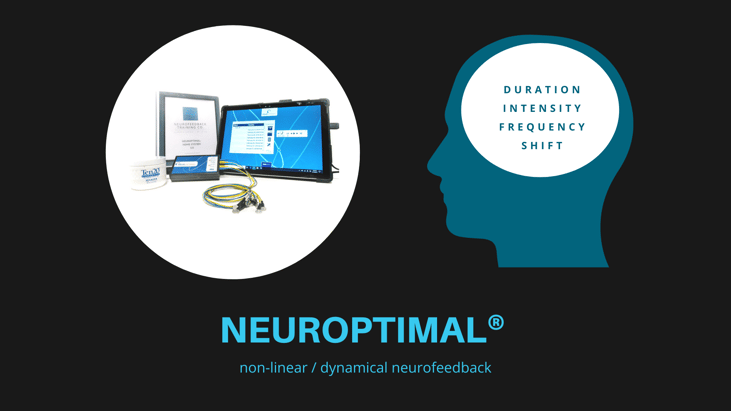
The latest technology in brain training, is Dynamical neurofeedback. Dynamical neurofeedback is software designed as a result of advancements in the speed of computer technology to give feedback directly to the brain (not the trainer) in real time. Major changes that happened with the advent of Dynamical neurofeedback is that it does not require an intermediary between the data (maladaptive brainwaves) and the improvement of the brain's functioning. So it does not require an expert trainer to set protocols from a snapshot of brain functioning provided by the mapping. The software gives cues to the brain when it is mobilizing to shift brainwaves so the reset can happen organically and in real-time.
This new feature also makes assessing and measuring progress different. Gone is the need for a static brain map and constant monitoring of brainwave frequencies, and the use of hard data to determine if it is working. With NeurOptimal® neurofeedback, currently the only Dynamical neurofeedback technology on the market, the assessments move from output from the software, to self-reporting tools.
Another significant change is that the results can be broader than the reasons that brought the client try neurofeedback. With Dynamical Neurofeedback the design is to optimize the health of the entire brain's functioning. It is focused on all maladaptive patterns, not just ones identified by the trainer or client. As a result clients can see improvements in areas they didn't expect. For example, a client may be focused on calming their endless worrying, and find their sleep and ability to organize and focus also shifts.
You and those around you notice the changes. The results are not as vague as: I feel better, or I feel more relaxed. There are self-reporting checklists that are filled out every 8-10 sessions and only after the latest is completed is it compared to the one prior.
One of the top questions about neurofeedback training we get is how many sessions you or your child should do.
Because neurofeedback is a relatively new tool for optimizing mental and emotional performance, clients are uncertain as to how to assess whether it's working and how well. Before listing the early results, the disclaimer needs to be made that every brain is different and everyone has different stressors while training that can impact the timing of results. The following list is general guidelines, and if you are someone with on-going or pronounced stressors such as with work, chronic illness, or a long history of mental health issues, the results may be slower, but they may also not be!
As mentioned, every brain is different and everyone has different stressors affecting their brain health, performance and mood. The general changes clients report in sessions 5-10, show a more consistent pattern of positive changes in mood, sleep management and focus.

After 5 to 10 sessions children show, in general, more consistent shifts than adults. We can speculate as to why. One reason may be that because children have so many more neurons (the roadways of the brain) that are unassigned tasks they can rewire more quickly. Another reason may be because they have a less fixed idea of who they are mentally and emotionally, that as their brain reset, so do their sense of selves. They do
Neurofeedback training promotes confidence, and emotional fitness and can boost school performance. Read about a third-grade boy's improvements after doing regular neurofeedback training sessions for a year (watch also a video testimonial of him and his mom).
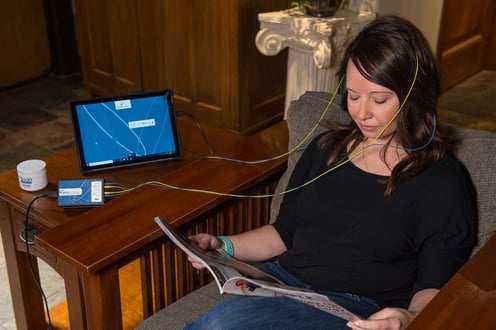 The most important job for clients when brain training is to train consistently and to fill out the self-reporting checklists every 8 to 10 sessions. Why? NeurOptimal® works by having the software interact with your automatic functioning brain so the results can be seamless, and noticed in hindsight. Here are some examples of the language clients use when they are reporting the benefits:
The most important job for clients when brain training is to train consistently and to fill out the self-reporting checklists every 8 to 10 sessions. Why? NeurOptimal® works by having the software interact with your automatic functioning brain so the results can be seamless, and noticed in hindsight. Here are some examples of the language clients use when they are reporting the benefits:
"I noticed I wasn't as irritated as I normally get in traffic."
"I woke up feeling more refreshed."
"Usually her meltdowns are 20 minutes, and this time she recovered in 10!"
Unlike most interventions we use to improve ourselves, such as exercising or brain training games like crosswords and bridge, or learning new studying skills, NeurOptimal® does not require active conscious effort during the training in order for it to work. The brain is getting an education but not on the conscious level.
During the actual session we see the best results are when clients letting go of trying to control the success of the session by trying to listen, or trying to notice changes. When clients allow themselves to relax, follow the breath, or for children, to engage in some activity that is engaging for them, the sessions are often more enjoyable.
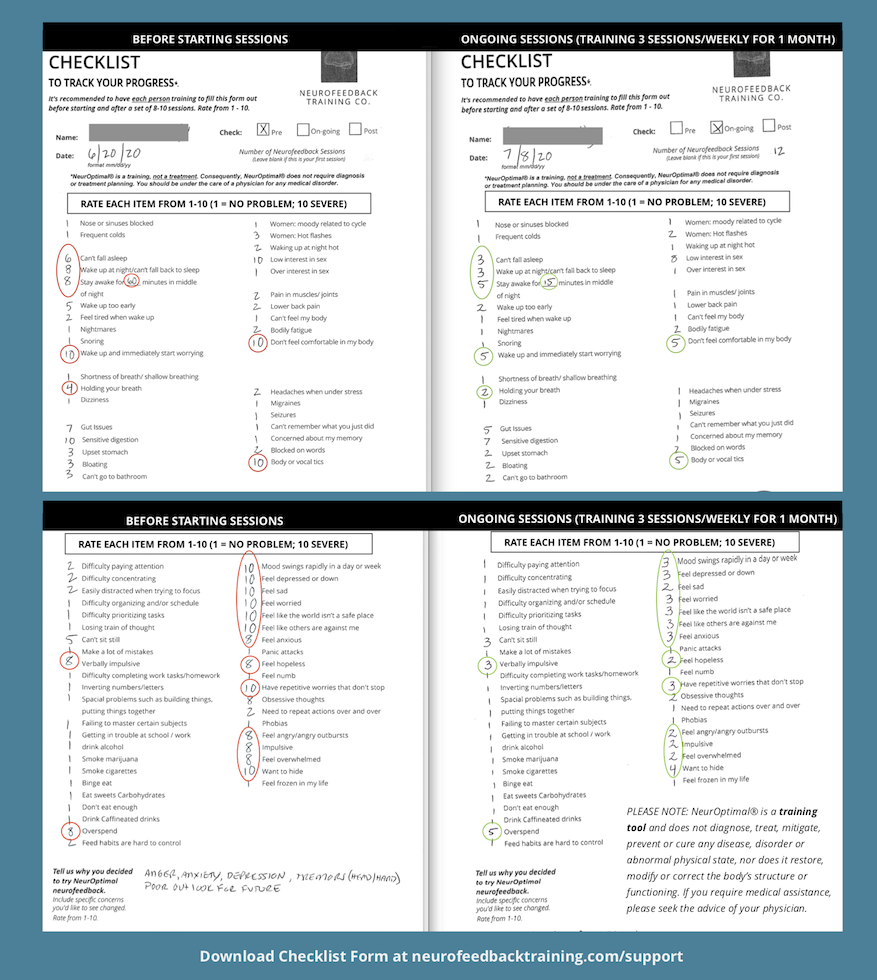
We coach our clients to use the changes they see on their checklists to indicate positive shifts are happening, so that during the actual sessions they do not need to worry about seeing the changes as they are happening. For people who are used to being in control, the key instruction for them for great neurofeedback results, is to encourage them to focus on counting their breathes during a session. That way they have a job, which will help them relax, and the brain training will happen through the automatic functioning brain communicating with the software millisecond by millisecond. In other words, the best results come when we get out of the way and let the brain training happen!
Natalie Baker has over 25 years of experience as a licensed psychotherapist and has been a NeurOptimal® neurofeedback trainer since 2011. She is the founder of Neurofeedback Training Co., which offers in-person sessions and runs the largest nationwide home rental program for NeurOptimal systems. Natalie also teaches meditation and Buddhist psychology and specializes in working with anxiety, stress, ADHD, and trauma.
Discover how neurofeedback therapy and brain mapping optimize brain function. Learn what neurofeedback is, how EEG neurofeedback works, and if it...
How home neurofeedback works, explore the best neurofeedback device for home use, and learn if you can do neurofeedback at home safely with rentals...
Explore how neurofeedback trains brainwaves to improve mood. Learn how EEG neurofeedback therapy works, benefits, and whether it can reduce...
Be the first to know about new blogs